Strange KPOP PT7: Sasaengs, Ulzzangs & Mukbangs
Sasaengs
In the weird and wonderful world of Kpop, not surprisingly, things sometimes stray to the extreme and darker parts of the human psyche. A combination of factors combine to create the sasaeng phenomena…The immense pressure that Korean society exerts on individuals is one factor.
The other factor is the always-on presence and availability of idols for their fans, created and promoted by the entertainment companies, inspired by the Jpop market, and improved on by the Korean entertainment companies. Both factors together with easily accessible data of itineraries, sightings and schedules, make for a dangerous brew for the idol and an enticing opportunity for the unhealthily zealous fan, in Korean called Sasaeng.
The sasaeng spectrum
Fanatic fans aren’t limited to just certain pop cultural scenarios, they occur in most areas of popular culture. The sasaeng can also vary in characteristic on a wide spectra, ranging from the extremely annoying fan standing around outside an idols residence, which might be upsetting but clearly south of Charles Mansons lack of impulse control, to sasaengs trying to influence the lives of their victim and in extreme cases trying to abduct the object of their affections… The common characteristics of the sasaeng is that they clearly value their own access to, and ownership of the idol, above any concerns of personal boundaries or indeed the safety of the victim. A flip side to the sasaeng is the fanatic anti-fan – while the adoration is exchanged for hate and loathing it’s hard not to lump extreme anti-fans into the sasaeng category as they have the same lack of empathy and personal boundaries as the “normal” sasaeng.
But Kpop wouldn’t be Kpop without adding an extra layer of intricacy. Because there are even stories of idol and idol trainee sasaengs. Girl group GLAM, while being mostly famous for being a Big Hit (BTS Fame) and Source Music (Gfriend fame) collaboration, spectacularly imploding after a member helped her girlfriend extort a famous Korean actor. Yet before this final scandal, GLAM enjoyed another scandal involving a member who was exposed as a sasaeng fan of a member of boy group Super Junior.
Geez.
Notorious sasaeng incidents
In 2006, boyband TVZQs’ leader Yunho accepted a bottle of orange juice after a concert thinking, not unreasonably, that it was just juice passed to him by a functionary of the show. After downing most of the content of the bottle and noticing a strong chemical smell the popular Korean idol started feeling sick and reportedly even started to vomit blood. Yunho was hospitalised for several days and later it was revealed that the orange juice had been laced with a strong chemical akin to superglue by a rabid anti-fan hoping to kill the idol.
Nayeon, the popular centre of mega girl group Twice, has for a long time had a persistent German stalker who’s various attempts to connect with Nayeon has ranged from booking himself on the same flight as the often travelling girl group in hopes of being able to talk to Nayeon, to releasing a Twice members phone number on social media. The stalker while claiming not to be a regular fan, but rather a serious love interest, has exhibited all the too common behaviours of the sasaengs with various resulting incidents even antagonising some of the Twice fanbase into virtually retaliating against him and his family and friends. While I do have an active imagination the expression: “you couldn’t make this shit up”, springs to mind.
With these two examples to give you an idea there is a, not so illustrious, but long history of various car chases, unwanted surveilling and straight up abduction attempts in Kpop all perpetrated by warped fans.

Nayeon of Twice: no lederhosen please…
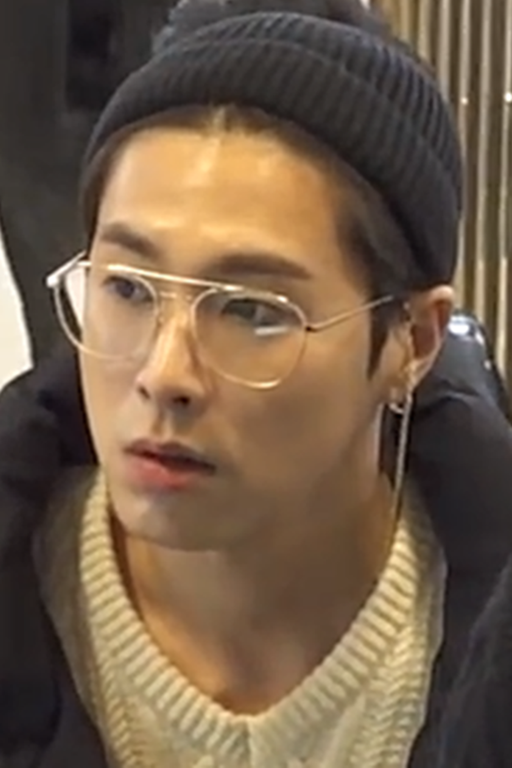
Yunho of TVXQ, orange juice.
Sasaeng:ing is hard work…
The sasaengs are often showing a surprising resourcefulness and dedication to their cause. Stories of sasaengs figuring out at what hotels their idols are going to stay by combining access to scedules with stolen intineraries and then installing cameras and microphones in hotel rooms they have figured out their idols will stay. Other stories of idols trying to outrun car borne sasaengs resulting in car chases and even car accidents or sasaengs preparing transportation identical to their idols transportation in the hope of getting them to board and then… having access to their idols. And other stories of sasaengs leaving careful traces of their under-the-radar access to their idols, posting close-up pictures of their obsessions sleeping, eating or exercising and leaving gifts behind in places they simply shouldn’t have access too.
A national secret agency could probably benefit from these individuals as the elaborate planning and attention to detail could, under other circumstance, land them jobs in the intelligence or security sectors. If they weren’t completely absorbed by infringing on their idols privacy and lives that is.
modern life is rubbish but who’s responsible?
Even though Korean high pressure society, expectations of constant access & entertainment and having too much time and not enough value in your life sure creates a toxic brew. But is there anything that can’t just be shrugged off as structurally bad?
A lot of fans have been critical of the companies that the idols work for, stating that the companies don’t really care about implementing the necessary security needed to keep their idol employees safe, this because of costs and fears of alienating fans. While there probably is some truth to this, the argument kind of misses the forest because of the trees: fan engagement is the lifeblood of the Kpop agencies promoting idols and idol groups. The more engaged the fans are the more revenue there is. Engagement in the form of relatable social media, idols stating they are in a relationship with their fans, round the clock access and a suspension of disbelief mode of fan-idol connection. It shouldn’t surprise anyone that the whole equation generates crazy behaviour in a large enough population.
Recently one of the oldest and largest contemporary agencies, SM entertainment released a statement that sasaeng fans and their activities would no longer be tolerated by the company. One of SMs most famous artists, Tayeon, formerly of Girls Generation, incidentally was almost abducted when on stage performing with Girls Generation many years ago.
Ulzzang
A quick google will give you that Ulzzang in fact means “best face” in Korean, the meaning roughly translating to “good looking”. An ulzzang is a young woman or man posting pictures of themselves adhering to a very particular set of aesthetics. Nowadays the style of the female Ulzzang is almost synonymous with the infamous Korean beauty standards: pale skin, v-shaped jaw, small face with large eyes with a high bridged nose and a small mouth. This complemented by minimal makeup mostly aiming to make a flawless complexion even more so with discrete pale coloured lipstick and eye makeup to accentuate or make puffy bags under the eyes. A variation of ulzzang is the momzzang which contrary to what you may think aren’t ulzzangs that are mothers (though they most likely exist), but rather an ulzzang focusing on the body (body + best = momzzang). During the heydays of the ulzzang children ulzzang were not uncommon.
The Ulzzang phenomena swept Korea almost a decade ago continuing into the rest of Asia and can in ways be seen as part of the blueprint of the modern social media influencer. Some successful ulzzang were even recruited by talent agencies.
While the Ulzzang as a pop cultural phenomena has petered out the past 7 or 8 years, this probably has more to do with how ingrained it’s become in mainstream pop culture and in Kpop in particular than a lack of interest. The formerly famous Ulzzang hangouts, like Cyworld, where Ulzzangs would post their selfies (also known as Selcas = Self Camera) and the public interested in things Ulzzang would then vote on the photos are now closed down. The Korean makeup hype has slowed into steady outside of Korea sales – the initial hype boosted in part by the Ulzzang boom. As such the Ulzzangs have not so much disappeared as they have become a part of the mainstream and a lot of the style of content production is what we now are used to from influencers. In fact the ulzzang style is hard to distinguish from the popular fashions in Korea as well as the Kpop artists who define a lot of trends for the youths of the nation.
celebrity ulzzangs
While there are quite a few artists who used to be ulzzang were then recruited by talent agencies due to their fame and notoriety as ulzzang, ulzzang culture at its height was such a broad phenomena that you also get the odd idol who didn’t become an idol because of their former Ulzzang status. Rather the participation in Ulzzang culture is something that’s been unearthed at a later point. And there is no stigma associated with this and having been an ulzzang isn’t detrimental to anyones pop career in the highly appearance focused South Koreans society.
There’s more famous ulzzangs than you can shake a toy hammer at and lot’s of artists who have been ulzzang. So just to mention an example I’ll mention the multifaceted Eunha (Jung Eunbi) formerly of disbanded Gfriend. Eunha was a young ulzzang and also a child actor before going on to domestic fame as the lead vocalist and chief space cadet in now defunct Gfriend. Another famous Kpop star is Kwon Mina formerly of AOA. Mina was the victim in the so-called AOA bullying scandal but was also an ulzzang when she was younger and before AOA.
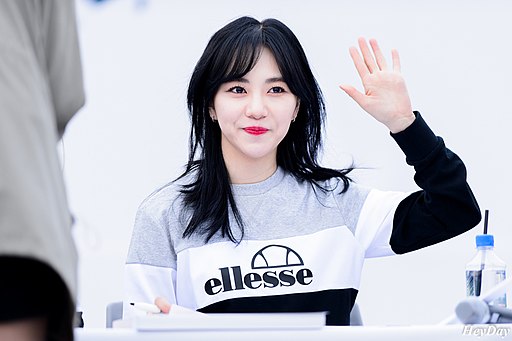
Mina, former AOA, looking cool in Ellesse
mukbang – the art of the eat
Mukbang is a combination of the word for Eating and Broadcast in Korean (“meokneun” and “bangsong” respectively). Having originated in the walled garden of Korean entertainment tech platforms, more specifically the peer-to-peer streaming platform AfreecaTV during the late 2000 – early 2010, mukbangs has become a lasting phenomena and even extending outside of South Korea. It started with so-called Broadcast Jockeys on the AfreecaTV streaming platform starting to broadcast themselves bingeing on Korean food while doing a running commentary as well as treating the viewers as fellow diners creating a social and inclusive atmosphere. AfreecaTV has a history of hosting different Korean phenomena – another well known one being Esports with numerous Starcraft and Starcaft 2 tournaments.
The platform has also been notoriously controversial with everything from broadcast jockeys selling sex to being a means for protesters to organise leading to various governmental restrictions on the network. However despite this, AfreecaTV is a fixture in the Korean media landscape with Mukbang being a viable source of income for Broadcast Jockeys, “BJ”s for short, with BJs most often being young people who most likely, due to the heavily competitive nature of the Korean job market are looking for alternative means of earning an income.

So what is it then?
The mukbangers, who will vary in shapes, gender and style, all eat while broadcasting. The eating isn’t the dainty influencer eating of Instagram or your friends selective Facebook & Instagram postings of various brunches, but rather massive voluminous food intakes grunting, groaning and expositions on how it tastes. 30 to 60 minute recordings of one person stuffing themselves with various dishes not stopping until the perverse amounts of food are completely consumed.
I tried to live in the real world instead of a shell…
Due to the increased social isolation that, much like in Japan, leads to large swathes of the population lacking the social life and interaction they crave, the mukbang fills a void. Especially considering the key social function and importance that eating has in South Korea. Food is eaten with friends and family, sharing your food and the various habits and customs surrounding eating and drinking being a hugely important part of Korean culture as well as another expression of the hierarchical nature of Korean society. There are for example rules for when and how you serve your seniors drinks, how to drink in the company of seniors (and someone always is) as well as how you receive a poured drink from a senior. But for many Koreans who are socially isolated this natural and critical part of social life is missing.
…but i was bored before i even began
Add to this that the expected impulse control in the form of regulating your food intake to stay slim and adhere to the ever present South Korean beauty standard, is seen as important, no wonder that someone breaking all customs in such a vital arena as eating, is used as both a source of filling the craving for social interaction and companionship as well as a longed for break from the regime of expectations. Seen from this perspective the mukbang suddenly starts to make a lot of sense. The mukbang is a social phenomena that you can consume online while at the same time getting a good vent watching something almost taboo in how it breaks social rules.
The Mukbang Format and some well known Mukbangers
Doing a mukbang isn’t just as simple as sitting down and inhaling more food than you thought possible while recording it. The mukbanger narrates the eating and talks to the viewer to create a sense of participation and companionship.
The BJ mukbanger might also be expected to keep up to date and comment on current events and also stay on top of good places to eat and new foods being available. And the broadcasters job is far from easy – the volumes of food, especially since most of the time the food intake is spicy and fat, while at first obviously pleasurable often deteriorates into a painful show of the mukbanger forcing herself/himself to finish the food.
Mukbangers can be male or female but you could speculate that it might be easier to gain notoriety as a female mukbanger due to the higher gap in expectation because of the social strictures to behave properly and being sophisticated being somewhat higher on women in South Korea than on men.
Some popular but very different mukbangers are BJ Shoogi/Shukii, Banzz, Wangju/Wangjoo and Japanese mukbanger Yuka Kinoshita. Shukii has more than 1,5 million subscribers and represents a Korean female type of broadcaster who, with her innocent and slender appearance, adheres to the Korean beauty standard that creates that contrast with her shows of extreme eating. Shukii is also known for her ASMR clips as well as being appreciated for her inventive and colourful narration during mukbangs.
Shuki, Ramyon/Ramen
On the opposite side you have Wangju, a young woman not seeming to care much about Korean beauty standards or indeed letting a sense of propriety discourage her from letting off a thunderous burp after a more than usual arduous eating session. Mostly eating Korean takeout food in the comfort of her home, Wangju represents a refreshingly non-gentrified mukbang style.
Wangju, Burp
Banzz, a male mukbang broadcast jockey used to be on the top of the mukbang game at his peak having over 3 mil subscribers on Youtube, appearing on Korean TV and ruling the category on AfreecaTV. Somewhat the golden standard of the male mukbang category Banzz fell from grace after being exposed as having falsely endorsed dieting supplements, crediting them for his weight control and loss. With the backlash being massive, Banzz is now relegated to mukbang history.
Banzz, supplements
Japanese female mukbanger Yuka Kinoshita is a young woman proving the cultural transferability of mukbang from South Korea to Japan. Yuka has a massive following of 5,5 million subscribers on Youtube where she can be seen wolfing down everything from fast food to traditional Japanese food and also being in the category of mukbangers who sometimes cook and their own food during broadcast.
Yuka can eat too
Mukbangs & Kpop idols
With AKB48, and the evolution of the Jpop and the Kpop recipes for creating engagement, is it any wonder that new novel ways of getting under the skin of a celebrity or idol are constantly evolving? Comes as no surprise then that several Kpop stars have their own mukbang shows or mukbang episodes on their Youtube-channels or other social media platforms. Penultimate girl group survivalists, Apink active for 10 years have at least 3 members who have engaged in mukbangs at any scale. Bomi does mukbangs on her channel on a regular basis, Hayong is also known to having broadcasted some eating for the fans but it should be noted that the real anomaly in eating terms is probably Namjoo, the probably least known member of Apink who is notorious for her eating capacity displayed both in mukbangs as well as various TV shows when food has been served. All of this showing how integrated mukbang now is in Korean pop culture.
So which of these Korean phenomena do you find the most fascinating? And is there any reason to believe they could in fact be combined?









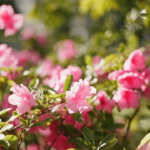
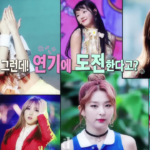

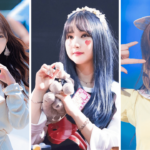
0 Comments